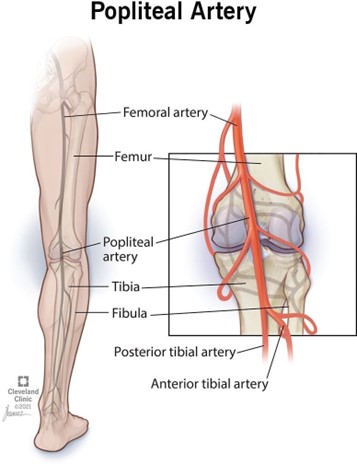The blood pressure in the large systemic arteries is greatest during:
Ventricular systole.
Atrial diastole.
Ventricular diastole.
Atrial systole.
The Correct Answer is A
This is because ventricular systole is the phase of the cardiac cycle when the ventricles contract and pump blood into the arteries.
The blood pressure in the arteries is greatest during this phase because of the forceful ejection of blood.
Choice B.
Atrial diastole is wrong because atrial diastole is the phase of the cardiac cycle when the atria relax and fill with blood from the veins.
The blood pressure in the arteries is lowest during this phase because the ventricles are also relaxed and not pumping blood.
Choice C.
Ventricular diastole is wrong because ventricular diastole is the phase of the cardiac cycle when the ventricles relax and fill with blood from the atria.
The blood pressure in the arteries is low during this phase because the ventricles are not pumping blood.
Choice D.
Atrial systole is wrong because atrial systole is the phase of the cardiac cycle when the atria contract and push blood into the ventricles.
The blood pressure in the arteries is not affected by this phase because the ventricles are still relaxed and not pumping blood.
The normal range for systolic blood pressure is less than 120 mm Hg and for diastolic blood pressure is less than 80 mm Hg.
Nursing Test Bank
Naxlex Comprehensive Predictor Exams
Related Questions
Correct Answer is C
Explanation
The endocrine system may have a longer-lasting effect than the nervous system because the hormones it produces can circulate in the bloodstream for a long time and affect many organs and tissues.
The nervous system, on the other hand, uses nerve impulses and neurotransmitters for communication, which are faster but more short-lived.
Choice A is wrong because the endocrine system is essential to life.
It regulates many vital functions such as metabolism, growth, reproduction, mood, sleep, and blood pressure.
Choice B is wrong because the endocrine system takes longer than the nervous system to deliver its messages.
The hormones have to travel through the bloodstream to reach their target cells, while the nerve impulses can travel along the nerve fibers at high speeds.
Choice D is wrong because the endocrine system does use receptors.
The hormones bind to specific receptors on the target cells to trigger a response.
Correct Answer is C
Explanation
The popliteal artery is a continuation of the femoral artery that runs through the back of the leg and the knee.

It is located in the popliteal fossa, a hollow space behind the knee. The popliteal pulse can be felt behind the knee.
Choice A is wrong because the thymus is a gland in the chest, not in the leg.
Choice B is wrong because the liver, spleen, and upper gastrointestinal tract are organs in the abdomen, not in the leg.
Choice D is wrong because the colon and rectum are parts of the large intestine, not the leg.
Whether you are a student looking to ace your exams or a practicing nurse seeking to enhance your expertise , our nursing education contents will empower you with the confidence and competence to make a difference in the lives of patients and become a respected leader in the healthcare field.
Visit Naxlex, invest in your future and unlock endless possibilities with our unparalleled nursing education contents today
Report Wrong Answer on the Current Question
Do you disagree with the answer? If yes, what is your expected answer? Explain.
Kindly be descriptive with the issue you are facing.
